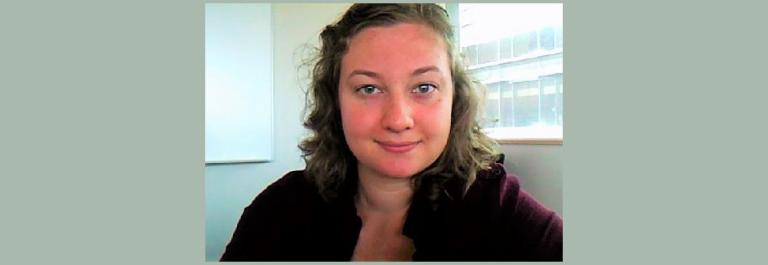
“To get that recognition and to know that NSF thinks I can do this, enough to fund me, is very appreciated.”
A Kettering University graduate recently received a prestigious National Science Foundation (NSF) fellowship to support STEM research for the next three years.
Kayla Cooley ‘12 received an award through the National Science Foundation Graduate Research Fellowship Program (NSF GRFP). The program recognizes and supports outstanding graduate students in NSF-supported science, technology, engineering, and mathematics disciplines who are pursuing research-based master's or Ph.D. degrees at accredited institutions in the United States.
As the oldest graduate fellowship of its kind, the GRFP has a long history of selecting recipients who achieve high levels of success in their academic and professional careers.
“I was so shocked. It’s so competitive and a lot of well deserving people applied,” said Cooley, who was a Physics major at Kettering. “It’s very encouraging to be chosen. A lot of time when you are in the midst of research and not everything is going correctly, it’s easy to get down.To get that recognition and to know that NSF thinks I can do this, enough to fund me, is very appreciated.”
For the 2017 awards, NSF received over 13,000 applications and made only 2,000 award offers, according to the NSF GRFP website.
After graduating from Kettering, Cooley was a defense contractor for three years. She made the switch to grad school in 2015 when she was accepted to the Material Science and Engineering Program at The Pennsylvania State University.
Being named as a NSF Fellow means Cooley will have more freedom in her research. Not only will her tuition be funded but she will also receive a stipend.
Cooley’s research area is focused on microscopy of electronic materials.
“My current research is focused on developing low resistance Ohmic contacts to GeTe, a phase change material. Phase change materials are most well-known for their use in rewritable discs,” Cooley said. “However, their unique capability to quickly transition between crystalline and amorphous states, which exhibit vastly different electrical and optical properties, also makes these materials promising candidates for nonvolatile memory and radio frequency (RF) switch applications.
“My main experimental efforts have focused on cross-sectional transmission electron microscopy of contact test structures, relating interfacial chemistries and solid-state reactions to contact performance to help develop high performance RF switches.”
The work is important because contact resistance significantly contributes to the ON-state resistance of GeTe RF switches, and an ideal RF switch should have a very low ON-state resistance value, Cooley said. There is great interest in development of phase change material RF switches since these require simpler fabrication, can be implemented in smaller devices, and offer faster switching speeds than the current MEMS or solid-state technologies.
Proposed research through the NSF fellowship will provide novel insights concerning fundamental physics of electronic transport at interfaces, and they can be applied to the continued development of semiconductor devices used in communications, computing, energy conversion, and everyday technology.
“From cell phones and computers to cars and household appliances, it is virtually impossible to go through an entire day without interacting with some kind of semiconductor device,” Cooley said. “My research proposal outlined a plan to discover direct correlations between the location of dopant and alloying elements on both the local electronic structure and the current transport at metal-semiconductor interfaces.”
Her interest in microscopy started when Cooley was at Kettering.
“You get a whole new perspective you get when you look at material at such a small scale. It allows you to look at the world in a unique way and discover important relationships between structure and performance,” she said. “Microscopy helped me discover my passion for materials research.”
Doing more research as a graduate student wasn’t initially Cooley’s plan, but her time at Kettering prepared her for it.
“I’ve been doing research since I was an undergraduate freshman. From that experience I grew to be an independent researcher. I think Kettering prepared me very well for that,” Cooley said.
Cooley’s future plans include going back to work for the federal government.
“You’re a little bit closer to seeing the impact of your research. I would like to go back,” she said. “Ultimately I would love to work at a national lab.”